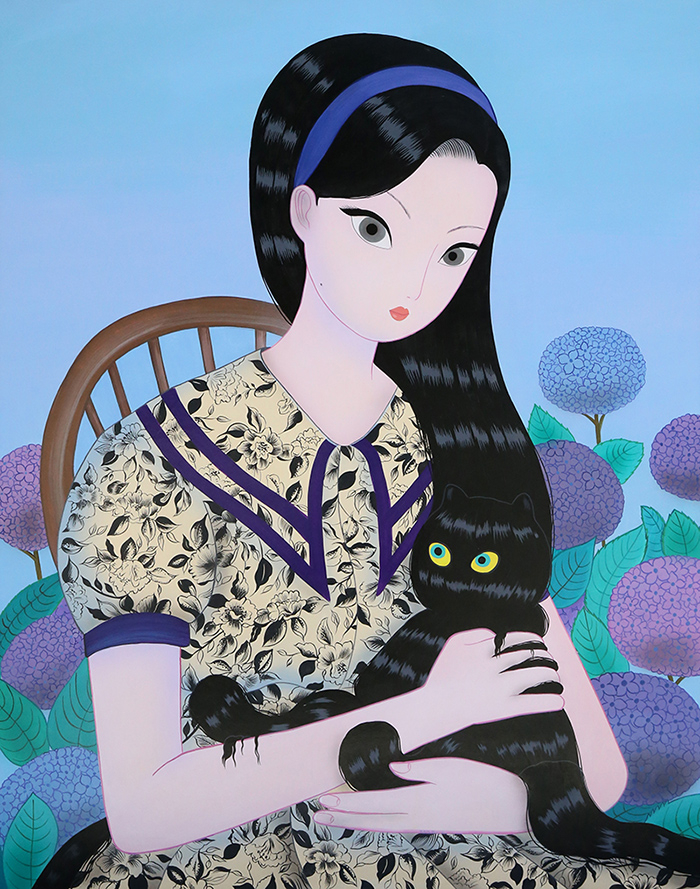Cryptocurrencies
Domestic NFT art sale surpasses 3.5 bitcoin; concerns of market turbulence
Art is the biggest beneficiary of NFTs but pop and sports also weigh in
By Nov 30, 2021 (Gmt+09:00)
2
Min read
Most Read
LG Chem to sell water filter business to Glenwood PE for $692 million


Kyobo Life poised to buy Japan’s SBI Group-owned savings bank


KT&G eyes overseas M&A after rejecting activist fund's offer


StockX in merger talks with Naver’s online reseller Kream


Mirae Asset to be named Korea Post’s core real estate fund operator



Last week, a piece of non-fungible token art by digital artist Jang Koal was sold for more than 3.5 bitcoin or around 200 million won ($168,314) on UPbitNFT, an arm of the Korean cryptocurrency exchange UPbit. It is operated by Dunamu, one of the country's highest-valued startups.
In other words, art that only exists online is selling for about the same price as some of the priciest tangible pieces of art in Korea. Naturally, the sale was also great business for UPbit and digital art platform XXBlue, operated by SeoulAuction Blue, which together received more than half of the sale price in commission.
Industry insiders say the sky-high auction price is a reflection of the turbulent domestic NFT market.
NFT FEVER IN CULTURAL, ARTS, SPORTS ARENAS
Apart from fine art, collectibles such as video footage of an artist's daily life or an athlete's best moments have also turned into NFTs and have been met with bullish investor sentiment.
Fine art has benefited heavily from the advent of NFTs as authenticity and originality are the genre's main tenets of value.
Prior to NFTs, digital artwork was worth only a fraction that of a physical piece. Buyers were unwilling to pay for a piece that can be reproduced multiple times as a computer file. But in the case of NFT-based digital work, its originality can be traced on the blockchain -- a digital ledger of transactions.
Back in March, the American digital artist Beeple sold his Everydays: the First 5000 Days, a collage of all the images he has created since committing to creating an image every day in 2007, at Christie's for $69 million.
Another advantage that visual arts have in the NFT sector is that the pieces are easier to turn into NFTs than other works such as audio-visual art.
Thanks to this convenience, a number of NFT art exchange platforms have popped up in Korea, such as Klip Drops by GroundX and MetaGalaxia by Galaxia Moneytree, to name just two.
K-pop labels like SM Entertainment and JYP Entertainment have also announced their plans to enter the NFT market.
Last but not least, character developers are bullish on the nascent market, too. SmartStudy, known for its Baby Shark hit song and related merchandise, will also release NFT content next month. Established in 2010, the educational entertainment company is a subsidiary of Samsung Publishing Co. Ltd.
Write to Seong Soo-Young at syoung@hankyung.com
Jee Abbey Lee edited this article.
More to Read
-
 Business & PoliticsTrump Jr. meets Korean business chiefs in back-to-back sessions
Business & PoliticsTrump Jr. meets Korean business chiefs in back-to-back sessionsApr 30, 2025 (Gmt+09:00)
-
 Korean chipmakersSamsung in talks to supply customized HBM4 to Nvidia, Broadcom, Google
Korean chipmakersSamsung in talks to supply customized HBM4 to Nvidia, Broadcom, GoogleApr 30, 2025 (Gmt+09:00)
-
 EnergyLS Cable breaks ground on $681 mn underwater cable plant in Chesapeake
EnergyLS Cable breaks ground on $681 mn underwater cable plant in ChesapeakeApr 29, 2025 (Gmt+09:00)
-
 Business & PoliticsUS tariffs add risk premium to dollar assets: Maurice Obstfeld
Business & PoliticsUS tariffs add risk premium to dollar assets: Maurice ObstfeldApr 29, 2025 (Gmt+09:00)
-

Comment 0
LOG IN


